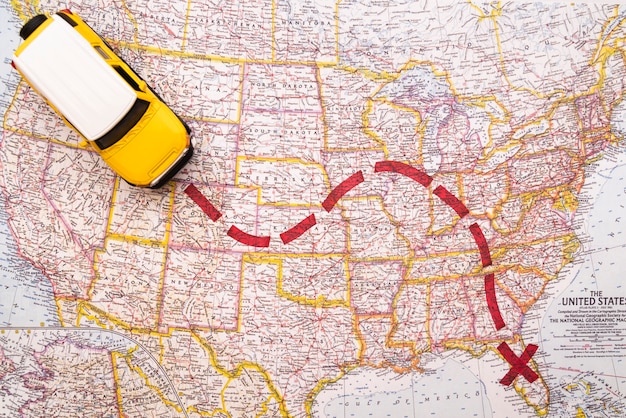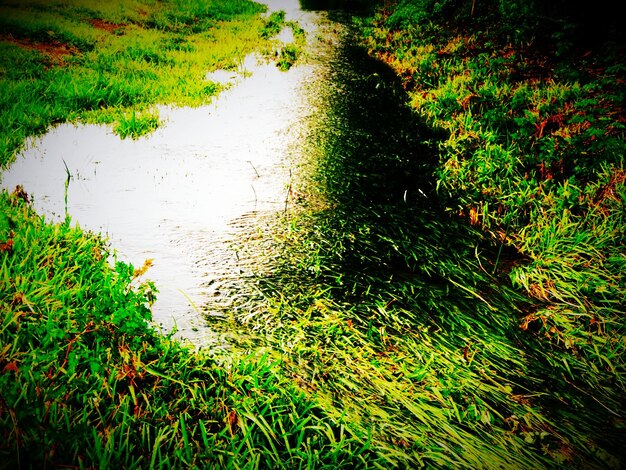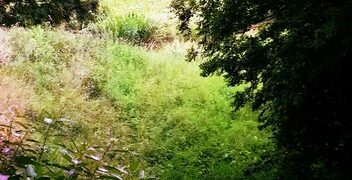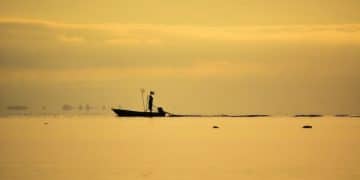Climate Change’s Role in US Invasive Species Spread

Climate change significantly exacerbates the spread of invasive species in US ecosystems by altering habitats, creating new pathways for colonization, and reducing native species’ resilience, thus accelerating ecological disruption and biodiversity loss.
Understanding how is climate change contributing to the spread of invasive species in US ecosystems is not just an academic exercise; it’s a critical investigation into the interwoven future of our nation’s biodiversity and environmental stability. The interactions between a warming planet and the relentless march of non-native organisms present a complex, escalating challenge for conservation and ecological health across the United States. This article will delve into the mechanisms by which climate change acts as a catalyst, propelling invasive species into new territories and amplifying their destructive impacts.
The Intertwined Threats: Climate Change and Invasive Species
The relationship between climate change and the proliferation of invasive species represents one of the most pressing environmental challenges of our time. It’s a complex dynamic where each factor intensifies the other, creating a feedback loop that accelerates ecological degradation across the US.
Climate change, manifesting as rising temperatures, altered precipitation patterns, and increased frequency of extreme weather events, creates unprecedented opportunities for non-native species to establish and spread. These environmental shifts often push native ecosystems beyond their adaptive capacity, making them more vulnerable to invasion.
Conversely, established invasive species can further exacerbate the impacts of climate change. For instance, some invasive plants can alter fire regimes, increasing the intensity and frequency of wildfires, which themselves are becoming more common due to a warming climate. Others can impact carbon sequestration, affecting the global carbon cycle.

Climate-Induced Habitat Alteration and Vulnerability
One of the primary ways climate change facilitates invasions is by altering existing habitats. As temperatures rise, geographical ranges shift, leading to novel climatic conditions in areas that were previously unsuitable for certain species. This can disrupt the delicate balance of native ecosystems, creating niches that invasive species are well-equipped to exploit.
For example, warmer winters in northern latitudes enable invasive insects, like the emerald ash borer, to survive in areas where cold temperatures previously limited their spread. Similarly, changes in rainfall patterns can favor invasive plants that are more drought-tolerant or can rapidly colonize disturbed landscapes, outcompeting native flora.
- Altered thermal regimes allow warm-adapted invaders to expand ranges.
- Changes in precipitation patterns favor drought-tolerant or flood-resistant invaders.
- Increased frequency of extreme weather creates disturbed areas ripe for colonization.
- Disrupted phenology (timing of biological events) creates asynchronies with native species.
The disturbance caused by extreme weather events—such as intense droughts, floods, or wildfires—also plays a crucial role. These events can decimate native populations, open up bare ground, and reduce competitive pressure, providing a blank slate for aggressive invaders to establish and dominate. The resilience of native ecosystems to these climactic shocks is often compromised, paving the way for invasive success.
In essence, climate change acts as an ecosystem engineer, breaking down existing barriers and creating new gateways for invasive species. This makes the battle against these ecological disruptors more complex, as traditional management strategies must now account for a constantly shifting environmental backdrop. The focus must expand beyond merely preventing introductions to understanding and mitigating the broader ecological forces at play.
New Pathways for Invasion: Range Shifts and Human Activity
Climate change isn’t just reshaping existing environments; it’s actively forging new pathways for invasive species into US ecosystems. These pathways manifest through direct range shifts of climate-adapted species and through the indirect influence on human activities that inadvertently aid dispersal.
As global temperatures rise, many species are experiencing what is known as a climactic range shift. This means that species previously confined to warmer climates are now able to survive and thrive in more temperate or even colder regions. For invasive species, which are often characterized by their adaptability and broad environmental tolerances, these shifting climate envelopes represent an open invitation to expand their geographical reach across the United States.
Consider the spread of fire ants (Solenopsis invicta) or lionfish (Pterois volitans/miles). Warmer winters and extended warm seasons allow fire ants to survive further north than ever before, encroaching on new habitats and posing risks to agriculture, infrastructure, and native wildlife. Similarly, rising ocean temperatures and altered ocean currents facilitate the expansion of marine invasive species like lionfish into new coastal waters, where they decimate native fish populations that lack natural defenses against them.
The melting of Arctic ice, a direct consequence of climate change, also opens up new shipping lanes that were previously inaccessible. These new routes can act as conduits for marine invasive species, transported in ship ballast water, to move between distant regions. This creates a novel pathway for biological invasions, particularly for polar and sub-polar ecosystems that have historically been isolated.
Human-Facilitated Dispersal in a Warming World
Beyond direct environmental changes, climate change indirectly influences human behavior and economic activities, which in turn can create new pathways for invasions. For instance, as agricultural zones shift due to changing weather patterns, new crops may be introduced to regions where they haven’t been grown before, potentially bringing with them associated pests or pathogens that become invasive.
- Increased international trade in new climatic zones.
- Relocation and migration of human populations due to climate impacts.
- New tourism and recreational activities in previously inaccessible areas.
Migration of human populations, sometimes driven by climate-related disasters or economic shifts, can also inadvertently move seeds, spores, or small organisms over large distances. Similarly, the growing demand for certain resources or goods that thrive in new climatic conditions can increase the accidental introduction of non-native species through packaging, transport, or commercial activities.
The very efforts to mitigate or adapt to climate change can also, at times, open new invasion pathways. Projects such as large-scale tree planting, habitat restoration, or bioenergy crop cultivation, if not carefully managed, can inadvertently introduce non-native species that then become invasive. Thorough risk assessments and the use of native species in such initiatives are crucial to prevent unintended consequences.
In summary, climate change fundamentally alters the landscape of biological invasions, not only by changing the suitability of habitats but also by actively creating and expanding the routes by which invasive species travel. This complex interplay necessitates a holistic understanding that integrates climate science, ecology, and human geography to effectively manage and mitigate the growing threat of invasive species in the US.
Weakening Defenses: Reduced Resilience of Native Species
Climate change doesn’t just open doors for invasive species; it simultaneously undermines the very foundations of native ecosystems, making them less resilient and more susceptible to invasion. This weakening of defenses is a critical aspect of how is climate change contributing to the spread of invasive species in US ecosystems.
Native species, adapted over millennia to specific environmental conditions, often struggle to cope with the rapid pace of climate change. Their specialized adaptations become liabilities in a rapidly shifting environment. For example, a plant species that evolved to flower only after a certain period of cold may find its cues disrupted by warmer winters, affecting its reproductive success. Similarly, animals may find their food sources altered or their migration patterns disrupted by earlier springs or prolonged droughts.
When native species are under such climate-induced stress, their ability to compete, reproduce, and resist external pressures diminishes. Their populations may decline, their genetic diversity might decrease, or their overall health can deteriorate, leaving ecological gaps that invasive species are quick to fill.
Physiological Stress and Competitive Disadvantage
Direct physiological stress is a major factor. Elevated temperatures can push species beyond their thermal tolerance limits, leading to reduced growth, reproduction, or increased mortality. Altered precipitation regimes, causing either prolonged droughts or increased flooding, similarly stress native plants and animals.
This stress places native species at a significant competitive disadvantage against invasive species, which are often characterized by their broad environmental tolerances, rapid growth rates, and high reproductive output. Invasive species can exploit the compromised state of native populations, outcompeting them for resources like water, light, and nutrients, or even preying on weakened native animals.
- Native species experience reduced growth and reproduction due to thermal stress.
- Droughts and floods directly impact native plant health and survival.
- Altered resource availability puts native species at a competitive loss.
- Indirect effects via changes in predator-prey dynamics or disease vectors.
Moreover, climate change can disrupt the intricate ecological relationships that have evolved over time within native ecosystems. For example, the timing of an insect’s emergence might no longer align with the flowering of a native plant it pollinates, leading to reproductive failure for the plant. Such “phenological mismatches” can unravel complex food webs and mutualistic relationships, creating further instability that benefits opportunistic invaders.
The cumulative effect of these climate-induced stresses is a reduction in the overall biodiversity and functional integrity of native ecosystems. As native species dwindle, the ecosystem becomes less resilient, losing its ability to resist invasion and recover from disturbances. This creates a vicious cycle where climate change facilitates invasion, and the invasion, in turn, can further degrade the ecosystem’s capacity to cope with climate change impacts.
Mitigating this vulnerability requires not only addressing climate change itself but also implementing conservation strategies that enhance the resilience of native ecosystems. This includes habitat restoration, assisted migration of vulnerable native species, and proactive management of existing invasive populations to provide native species with a better chance to adapt and survive in a changing world.
Case Studies: Real-World Impacts in US Ecosystems
To truly grasp how is climate change contributing to the spread of invasive species in US ecosystems, it’s essential to examine concrete examples. Across diverse biomes, from the arid Southwest to the coastal wetlands, the fingerprints of this interaction are becoming increasingly clear, illustrating the varied and impactful consequences.
Consider the spread of cheatgrass (Bromus tectorum) in the Great Basin region of the western US. Historically, cheatgrass has been a problem, but climate change has intensified its dominance. Warmer winters and earlier springs, characteristic of climate change in this region, provide cheatgrass with a competitive advantage. It germinates earlier than native perennial grasses, monopolizing water and nutrients before native species can establish themselves. This early growth also means cheatgrass dries out earlier in the season, creating a continuous, fine fuel bed that increases the frequency and intensity of wildfires. These fires further decimate native sagebrush ecosystems, which are not adapted to frequent burning, creating more open ground for cheatgrass to colonize, thus perpetuating a destructive feedback loop.
Marine Invasions and Warming Waters
In aquatic environments, particularly marine ecosystems, rising ocean temperatures are accelerating the spread of warm-water invasive species. The lionfish, a visually striking but voracious predator, serves as a prime example in the Atlantic waters off the southeastern US and the Caribbean. Originally from the Indo-Pacific, lionfish have expanded their range significantly due to warmer waters, which allow their larvae to survive further north and their adults to thrive in new areas.
- Lionfish: Expanding range due to warming ocean temperatures, devastating native reef fish.
- Green crabs: Northern expansion facilitated by milder winters, impacting shellfish industries.
- Vibrio bacteria: Increased prevalence in warming coastal waters, posing health risks.
Their unchecked proliferation has dire consequences for native fish populations, as lionfish consume large quantities of juvenile fish and crustaceans, outcompeting native predators and disrupting food webs. This ecological imbalance has significant economic implications for fisheries and tourism, particularly in regions dependent on healthy coral reefs. The lack of natural predators in their invaded range further exacerbates the problem, making control extremely challenging.
Another example is the European green crab (Carcinus maenas), which has been a destructive invasive species in US coastal waters for over a century. However, warming Atlantic waters are enabling its northward expansion along the New England coast and into new areas in the Pacific Northwest. These crabs are highly aggressive predators of shellfish, including native clams, oysters, and mussels, posing a serious threat to commercial fisheries and the ecological integrity of intertidal zones.
Forest Pests and Extended Warm Seasons
In US forests, climate change is prolonging the life cycles and expanding the ranges of invasive insect pests. The southern pine beetle (Dendroctonus frontalis), a devastating pest of pine trees, is historically limited by cold winter temperatures. However, milder winters due to climate change are allowing these beetles to survive and reproduce further north and at higher elevations in the eastern US.
This expansion means greater damage to pine forests, leading to widespread tree mortality, increased wildfire risk from dead trees, and significant economic losses for the timber industry. Similarly, the emerald ash borer (Agrilus planipennis), an invasive beetle that has decimated ash trees across the US, also benefits from warmer conditions, which can accelerate its life cycle and enable it to complete more generations in a year, intensifying its destructive impact.
These case studies underscore that climate change is not merely an abstract concept; it is a tangible force accelerating the spread and impact of invasive species across various US ecosystems. Understanding these specific interactions is crucial for developing targeted and effective strategies to mitigate the interconnected threats they pose.

Societal and Economic Consequences of Enhanced Invasions
The ecological ramifications of climate change-driven invasive species are profound, but their societal and economic consequences are equally significant, impacting everything from public health and agriculture to infrastructure and recreational opportunities across the United States.
Economically, the costs associated with managing invasive species are already staggering, and climate change is set to inflate these figures. These costs include direct expenditures on control and eradication programs, economic losses from reduced agricultural yields, declines in fisheries, damage to infrastructure, and decreased tourism revenue. For instance, the spread of agricultural pests, intensified by climate-induced range shifts, can necessitate increased pesticide use, higher farming costs, and diminished crop quality and quantity, affecting food security and farmer livelihoods.
In forestry, the widespread mortality caused by climate-favored invasive insects results in significant losses for the timber industry. Dead trees also increase the risk of catastrophic wildfires, incurring enormous costs for fire suppression and post-fire restoration. The economic impact extends to property damage, business disruption, and the cost of rebuilding communities affected by these intense blazes.
Impacts on Human Health and Infrastructure
Beyond natural resource industries, human health is also at risk. Some invasive species act as vectors for diseases, and their expanded ranges due to climate change can bring these diseases into new population centers. For example, warmer temperatures and altered rainfall patterns can create more favorable conditions for mosquito species that carry diseases like West Nile virus or Zika virus, expanding their geographical reach and increasing human exposure risks.
- Increased disease vectors (e.g., mosquitoes, ticks) leading to public health crises.
- Damage to infrastructure from invasive plants (e.g., roots cracking foundations, pipelines).
- Reduced access to traditional food sources and cultural practices for indigenous communities.
Indirectly, the degradation of natural ecosystems by invasive species can reduce the availability of clean water, impact air quality, and diminish the ecosystem services that societies rely upon, such as pollination and flood regulation. This translates to higher costs for municipal water treatment, greater risks of flooding, and reduced agricultural productivity without these natural benefits.
Infrastructure is also vulnerable. Invasive plant roots can undermine building foundations, crack pavement, and clog drainage systems, while aquatic invaders can foul water intake pipes and power plant cooling systems. The repair and maintenance associated with these damages represent a continuous financial burden on communities and industries.
Socially, the loss of biodiversity and the degradation of natural landscapes due to invasive species diminish recreational opportunities like fishing, hunting, and hiking, impacting local economies dependent on ecotourism. Moreover, for indigenous communities and populations with deep cultural ties to specific ecosystems and native species, the impacts of invasive species can result in the loss of traditional food sources, medicinal plants, and sacred sites, leading to profound cultural and spiritual losses.
The pervasive and multifaceted societal and economic costs of climate change-driven invasive species underscore the urgent need for comprehensive and coordinated strategies. Addressing this challenge requires not only ecological management but also robust public health initiatives, economic planning, and a deep understanding of the interwoven human-environment dynamics.
Mitigation and Adaptation Strategies for a Resilient Future
Addressing the complex intersection of climate change and invasive species demands a multi-faceted approach encompassing both mitigation and adaptation strategies. It’s about reducing the root causes of climate change while simultaneously building resilience in ecosystems and communities, thereby creating a future less susceptible to the escalating threats of invaders.
At the highest level, mitigating climate change itself is paramount. Reducing greenhouse gas emissions through renewable energy adoption, energy efficiency improvements, and sustainable land use practices will slow the rate of warming and lessen the severity of associated environmental shifts. This, in turn, will reduce the opportunities and pathways for invasive species expansion that are directly linked to a changing climate.
However, given the climate changes already underway, adaptation strategies are equally crucial. These focus on bolstering the resilience of native ecosystems to both climate impacts and invasive species. One key strategy is to enhance the health and connectivity of native habitats. Healthy, biodiverse ecosystems are inherently more resistant to invasion and more capable of recovering from disturbances, including those driven by climate change.
Proactive Management and Early Detection
Proactive management of invasive species becomes even more critical in a changing climate. This includes rigorous risk assessments for potential invaders, especially those that may thrive under future climate scenarios. Early detection and rapid response (EDRR) programs are vital for new invaders, as prompt action can prevent widespread establishment and significantly reduce long-term control costs. Monitoring for novel invasions in areas newly affected by climate shifts is particularly important.
- Strengthen early detection and rapid response (EDRR) systems.
- Prioritize restoration of degraded native habitats to enhance resilience.
- Implement climate-smart management practices in agriculture and forestry.
- Foster public awareness and engagement in prevention efforts.
Restoration efforts should prioritize the use of native species and consider future climatic conditions. “Climate-smart” conservation involves selecting native plant species that are likely to thrive under projected future temperatures and precipitation patterns, rather than only those historically present. This approach aims to build future-proof ecosystems. Similarly, promoting genetic diversity within native populations can enhance their adaptive capacity to changing environmental conditions.
Integrated pest management (IPM) strategies in agriculture and forestry must also evolve to account for climate change. This means adapting planting schedules, crop varieties, and pest control measures to counteract the changing behavior and ranges of invasive agricultural pests and forest diseases. Collaboration among scientists, land managers, and policymakers is essential to share knowledge and develop effective, region-specific strategies.
Policy, Education, and International Cooperation
Policy frameworks play a pivotal role. Governments can implement stronger regulations on the import and transport of goods to prevent accidental introductions, particularly through new trade routes opened by climate change. Funding for research into invasive species ecology, climate change impacts, and innovative control methods is also critical. Financial incentives for landowners to engage in sustainable land management and invasive species control can amplify efforts.
Finally, public education and engagement are indispensable. Empowering citizens to identify and report invasive species, fostering responsible pet ownership, and promoting native planting in gardens can create a widespread network of environmental stewards. Given that invasive species often cross national borders, international cooperation and shared strategies are increasingly vital to address this global challenge effectively.
In essence, building a resilient future against climate change-driven invasive species requires a comprehensive strategy that weaves together global climate action with local ecological protection, supported by robust science, informed policy, and active community participation. It’s a testament to the interconnectedness of our planet and the collective responsibility we bear for its health.
The Path Forward: Collaborative Solutions and Future Outlook
Navigating the complex and escalating challenges posed by the synergy of climate change and invasive species requires more than isolated efforts; it demands a concerted, collaborative strategy across various sectors and scales. The path forward is illuminated by the need for integrated solutions, adaptive management, and a forward-looking perspective that anticipates future threats even as it addresses current ones.
One of the most critical aspects of this collaborative approach is breaking down the silos between climate scientists, invasion ecologists, land managers, policymakers, and local communities. A holistic understanding of how is climate change contributing to the spread of invasive species in US ecosystems hinges on interdisciplinary research. For instance, climate models can inform projections of future invasive species distributions, allowing for proactive monitoring and management in vulnerable areas. Conversely, understanding the ecological impacts of invaders can highlight the cascade effects that exacerbate climate vulnerabilities.
Adaptive management strategies are paramount. This involves continuously monitoring the effectiveness of conservation interventions, adjusting tactics based on new scientific understanding and changing environmental conditions. Given the dynamic nature of climate change and biological invasions, static management plans are unlikely to succeed. Instead, an iterative process of planning, implementing, monitoring, and adapting is essential.
Investing in Research and Technology
Continued investment in research and technological innovation will be crucial. This includes developing more effective and environmentally sound control methods for established invasive species, exploring genetic approaches where appropriate, and leveraging remote sensing and AI for early detection and rapid assessment of invasions across vast landscapes. Understanding the mechanisms by which climate change confers an advantage to particular invaders will enable targeted interventions.
Moreover, fostering biosecurity measures at national and international levels needs to be strengthened. This involves tightening regulations on ballast water management, improving screening protocols for imported goods, and educating port authorities and travelers about the risks of accidental introductions. As new trade routes emerge due to climate change (e.g., Arctic shipping lanes), these biosecurity measures must be agile enough to adapt. International cooperation and data sharing are vital, as invasive species do not respect political borders.
From a policy perspective, integrating invasive species management into broader climate change adaptation plans is no longer optional. This means considering invasion risks in land-use planning, infrastructure development, and disaster preparedness. For example, when restoring areas after climate-induced disturbances like wildfires or floods, prioritizing native species and swiftly controlling emerging invaders should be standard practice. Funding mechanisms must also reflect this integrated approach, supporting projects that address both climate resilience and invasive species control.
Public awareness and engagement remain foundational. Educating communities about the local impacts of invasive species, empowering volunteers in monitoring and removal efforts, and encouraging responsible practices (e.g., “plant native” campaigns, “clean, drain, dry” for recreational water users) can create a powerful network of citizen scientists and advocates. This grassroots involvement is often the first line of defense against new invaders.
The future outlook, while challenging, is not without hope. By embracing collaboration, prioritizing scientific research, implementing adaptive strategies, and engaging communities, we can build more resilient ecosystems capable of withstanding the dual pressures of climate change and biological invasions. The journey forward is long, but a unified approach offers the best chance to protect the rich biodiversity and ecological integrity of US ecosystems for generations to come.
| Key Aspect | Brief Description |
|---|---|
| 🌡️ Habitat Alteration | Climate change reshapes native habitats, creating vulnerable niches and disrupted conditions where invasive species can thrive. |
| 🗺️ New Invasion Pathways | Warming allows species range shifts, and human activities, influenced by climate, create new dispersal routes. |
| 🛡️ Weakened Native Defenses | Native species struggle with climate stress, reducing their resilience and making them susceptible to competition from invaders. |
| 📈 Socioeconomic Costs | Increased management expenses, agricultural losses, public health risks, and infrastructure damage arise from enhanced invasions. |
Frequently Asked Questions
▼
Rising temperatures allow many invasive species, originally adapted to warmer climates, to expand their geographical ranges into previously colder regions. This enables them to survive winters, reproduce more frequently, and outcompete native species that may be stressed by the unusual warmth or disrupted seasonal cues. It effectively removes a key thermal barrier to their spread.
▼
Yes, extreme weather events like prolonged droughts, intense floods, or severe wildfires often create disturbed landscapes. These disturbances can decimate native plant communities, open up bare ground, and reduce competitive pressure from native species. Invasive species, which are often generalists and resilient to disturbance, can rapidly colonize these newly available areas and establish dominance.
▼
Yes, in a feedback loop, some invasive species can exacerbate climate change impacts. For example, invasive grasses like cheatgrass can alter natural fire regimes, making wildfires more frequent and intense, which in turn contributes to carbon emissions and further degrades ecosystems already stressed by warming. Others can alter nutrient cycles or hydrological processes, reducing ecosystem resilience.
▼
Many US ecosystems are affected. The Great Basin faces increased wildfires due to invasive cheatgrass and climate-induced droughts. Marine ecosystems in the Atlantic and Pacific are seeing the range expansion of invasive lionfish and green crabs due to warming ocean waters. Forests across the US grapple with invasive insect pests like the southern pine beetle and emerald ash borer, whose life cycles and ranges are extended by milder winters.
▼
Mitigation involves comprehensive strategies: reducing greenhouse gas emissions to slow climate change, strengthening early detection and rapid response programs for new invaders, restoring native habitats to build resilience, and implementing “climate-smart” conservation that considers future climatic conditions. Public awareness, policy changes, and international cooperation are also crucial components of a holistic approach.
Conclusion
The intricate relationship between climate change and the proliferation of invasive species represents a formidable, escalating threat to ecosystems, economies, and public health across the United States. As explored in this article, how is climate change contributing to the spread of invasive species in US ecosystems extends beyond simple correlation; it involves a profound interplay where a warming climate actively reshapes habitats, forges new pathways for species movement, and critically weakens the natural defenses of native flora and fauna. Addressing this dual challenge demands a multi-pronged approach rooted in robust scientific understanding, proactive management, strategic policy shifts, and widespread public engagement. Only through such integrated and adaptive efforts can we hope to protect and restore the ecological integrity and resilience of our nation’s invaluable natural heritage for future generations.





